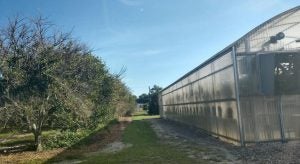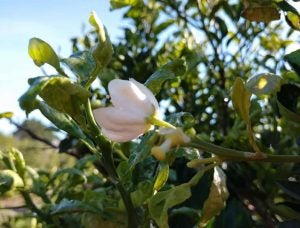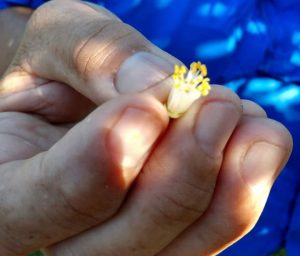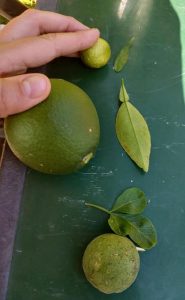I first heard of citrus greening disease several years ago from Canadian agrologist Robert Saik in this awesome TED talk. In it, he talks about real problems facing farmers today all around the world. From the black Sigatoka virus in corn in Kenya to the bacterial wilt fungus in the bananas of Uganda, certain diseases are rendering some crops completely useless.
But citrus greening is a disease hits close to home, as currently 90 percent of the Florida citrus industry is being devastated by it. Part of Saik’s TED talk explains how genetic engineering (GMOs) can help solve these problems, similar to the way the Hawaiian papaya was saved from ringspot virus.
Citrus greening (Candidatus Liberibacter asiaticus) is one of the most serious citrus plant diseases in the world, and once a tree is infected, there’s no cure. Citrus greening is spread by a disease-infected insect, the Asian citrus psyllid. Infected trees produce fruits that are green, misshapen, and bitter, unsuitable for sale as fresh fruit or for juice. The disease doesn’t directly pose a threat to humans and animals, but it affects farmers’ livelihood and the planet, as infected trees die within a few years.
“If you like orange juice, drink it now,” Saik says.
But is there hope? And what sort of progress have we been making? To find out, I traveled to Gainesville Florida, and visited with Dr. José X. Chaparro, associate professor for fruit tree breeding and genetics.

Dr. Chaparro taught me so much about plant breeding, and above is a photo of orange trees affected by citrus greening, also known as HLB, or yellow dragon disease. Research is being done to help the problem, but it is a very long process, and orange trees resistant to citrus greening are not yet available to growers. It takes six to eight years of research and three to four years before the trees bear fruit. Lots of testing and research is done to ensure quality fruit, yields, skins, seeds, disease resistance, etc. Here they’re working more on traditional plant breeding solutions which is a lot of trial and error. A GMO solution could eventually be more precise but takes a substantial amount of money, time, and research — however there are solutions currently in the pipeline.


Above are images of the male (anthers) and female part of the orange tree flower which are rubbed together and pollinated. Scientists have to figure out what traits are most important to growers and must keep crossing until they get exactly what their growers want and need. The female part has to be exposed, and when you cross different varieties, you get different fruits as seen here:

One of these (obviously unripened) oranges on the bottom is a trifoliate with a fuzzy peel; the one on top is too small. It takes a lot of trial and error, and the oranges must be marketed with interesting, marketable traits. (P.S. I love “cuties,” which are the cross between tangerines and sweet oranges! Yum!)
Another one of the challenges are the regulations and hurdles that must be adhered to. The sweet orange for juice processing has a very strict definition. Imagine if, to be considered a human, we all had to look exactly the same? It’s similarly a challenge faced with the development of new traits. Plants are cloned, budsticks are made, uniformity is important, but it can be very difficult to achieve.
So there are a couple solutions. One would be to modify the regulations as to what’s considered a sweet orange and the other is to find a GMO or gene-editing answer. But even then … would the public accept it? What is their perception, do they want GMO oranges? They should, once they realize the severity of citrus greening and understand the power of science to create solutions to help modern agriculture.
Michelle Miller, the Farm Babe, is an Iowa-based farmer, public speaker, and writer, who lives and works with her boyfriend on their farm, which consists of row crops, beef cattle, and sheep. She believes education is key in bridging the gap between farmers and consumers.



